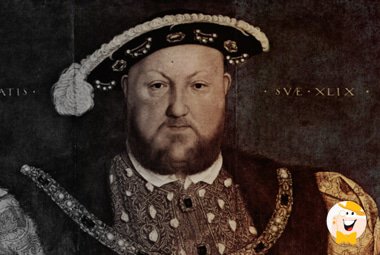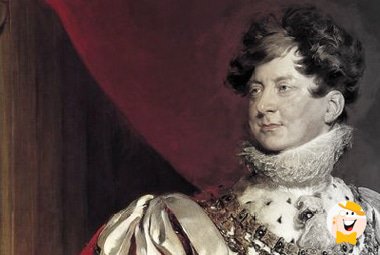![Kings and Queens: 8 Most Interesting Rulers in Gambling History [Stories Behind Cards]](https://a1.lcb.org/system/modules/news_story/images/attachments/000/309/292/original/Kings-and-Queens-8-Most-Interesting-Rulers-in-Gambling-History.jpg)
Monarchs are not for everyone nor are they for every nation. Throughout time, some of them were statesmen, reformers, or benefactors well-respected and revered by their people, while others ruled mercilessly embroiled in immorality, corruption, or debauchery. Some died peacefully, others perished violently. Twenty-six monarchies remain today: sovereigns, sultans, emperors, and emirs rein over 43 countries either as supreme rulers, political figures, or figurehead monarchs.
Simply put, humanity was always and still is polyvalent when it comes to Kings and Queens.
Gamblers are not.
There’s not a card player in the world that don’t seek the grace of their presence anytime, in any game, regardless of their suit (of course, even the highly skilled blackjack player that hits on hard-12 vs. dealer’s seven and gets King or Queen might disagree, although this is more of an exception to the rule).
In line with their royal counterparts, Kings and Queens are venerated by patrons who often salute them with the inner sense of proverbial proskynesis. When you consider speculations about true identities behind them, it’s not surprising.
At first, Kings on playing cards were linked to Solomon, Augustus, Clovis I (the first King of the Franks, one that united all tribes under a single ruler), and Constantine.
In the 16th century…
...the final choice fell to Charlemagne (Charles the Great, King of Hearts), David (the third King of the United Kingdom of Israel, King of Spades), Caesar (King of Diamonds), and Alexander the Great (King of Clubs).
Origins of Queens, on the other hand, are a bit more mystifying — as is usually the case with girls.
Queen of Hearts might represent Judith (a daring Jewish girl which decapitated Holofernes, Nebuchadnezzar’s general, and saved Israel from Assyrians’ invasion) though she may also be Empress Judith, wife of Charlemagne’s son, or even Isabeau of Bavaria, the Queen of France and wife of Charles VI.
Queen of Diamonds might be Rachel, one of two wives of Jacob, a Patriarch of the Israelites, or perhaps Agnes Sorel, chief mistress of King Charles VII of France, son of Isabeau of Bavaria.
Queen of Spades represents Athena, the Greek goddess of wisdom, handicraft, and war, known also as Pallas, and in Roman times, Minerva — but can also be Joan of Arc.
Queen of Clubs most often relates to Arginine, which is an anagram of Regina (queen in Latin), although it may represent Juno Regina, Jupiter’s wife and the queen of the gods in Roman mythology, or perhaps even Mary of Anjou, the Queen of France and wife of Charles VII.
It seems that the only safe bet in Queens’ conundrum is that Charles VII has a lot to do with them.
One way or the other…
Royalties around the world had a lot to with gambling since the dawn of time.
Some of them were casual social players, others compulsive gamblers with serious problems, while a few played just for the fun of it. Then, there were those who influenced gambling with regulations dating back to the 13th century or introduced legalized games as a way to improve the lives of their subjects.
Thus, here are the eight most interesting sovereigns who left different marks in games of skills and luck, and history.

King Henry VIII (1491-1547)
One of the most charismatic rulers in the history of English throne was remembered as accomplished leader that greatly expanded royal power, the “father of the Royal Navy,” and initiator of the English Reformation (separation from the Roman Catholic Church) while he oversaw the legal union of England and Wales, and ruled as the King of Ireland as well.
King Henry VIII also radically changed the English Constitution to herald the era of divine rights of kings, waged several unsuccessful and costly wars, had six marriages, and was sometimes characterized as egotistical, ruthless, and insecure.
In addition…
He was a profligate spender, referred to as England’s Number One Gambler.
Whether his inclinations stemmed from personal misfortunes, or not having a son at the time, or any other reason is open for debate, but the fact remains that King Henry VIII extensively played Tables (earlier version of backgammon), Brag (one of the predecessors to poker), and Queek (game of chance played with dice with no skills required whatsoever).
He played against other monarchs he hosted or visited and gambled with commoners. In the time when people across Europe traveled to purpose-made events to play against each other, he was a regular participant.
In his gambling pursuit of fortune, King Henry VIII was also a very unlucky gambler.
In just two years, he lost $4,190 (£3,250) which amounts to whopping $2.1 million today. According to The National Archives of the UK, in 1490, for this money, one could buy 2,304 horses or 8,552 cows while the money was worth of 293 years of skilled tradesman work.
King Henry VIII also lost the Jesus bells of St. Paul’s church on a single roll of dice in a game against Sir Miles Partridge, courtier and public figure. The use of bells as stake outraged Crown’s subjects so King publicly hanged his opponent for treason to gain back their respect.
From that point on, only a handful of players dared to gamble against him.
King Henry VIII died at the age of 55, after 38 years of rein, either from obesity or as a consequence of earlier jousting accident. He was peacefully succeeded by his son, Edward VI.

Queen Mary I (1516-1558)
The oldest child of King Henry VIII was initially overtaken in the line of succession by Edward VI due to male-line primogeniture, but when he got mortally ill, Mary quickly seized the power in a display of proper calculation of power, alliances, and ruthlessness.
In doing so, she became the first queen regnant of England, remembered for aggressive effort to reinstate Roman Catholicism — this is where Bloody Mary comes from, a nickname she earned after 280 Protestants were burned at the stake during her five-year reign — as well as for fiscal reform and naval expansion that ushered the era of colonial expansion accomplished by her half-sister and successor, Elizabeth I (more about her later).
Mary I enjoyed gambling and wagering, which is somewhat surprising since she was such a religious person.
She enjoyed playing cards, probably Brag, and used to wager up to one-third of her monthly income on gambling. Her Privy Purse accounts show numerous entries of lost money, and she was not shy to ask even her servants for money.
Once, during the game of Bowls — an outdoor sport in which a ball is rolled as close as possible towards a smaller ball used as a reference point; quite a popular sport in Tudor England — when her servants refused to loan her funds, Mary I wagered tomorrow’s breakfast. The next day, there was a line in her Privy Purse, taken in original: “Payed for a Brekefaste loste at Bolling by my lady Maryes grace.”
Queen Mary I died at the age of 42, after illness (probably an ovarian cyst or uterine cancer).

King George IV (1762-1830)
One of the most controversial monarchs in British history, the son of dutiful and sober George III became the Prince Regent in 1811 when his father descended into madness and rose to the throne in 1820 as the King of the United Kingdom of Great Britain and Ireland, as well as King of Hanover.
His reign turned out to be one of the worst in England’s history.
King George IV was enormously unpopular as he squandered a significant sum of taxpayers’ money to his extravagances, drinking, womanizing, huge court balls, and personal indulgences during a struggling period of economic and political discord.
However…
King George IV was also one of the most entertaining rulers ever known for his charm, deemed as “the first gentleman of England,” and was unexpectedly kind in person, while his cultural legacy is enjoyed to this day, so much that he has the stature at Trafalgar Square in London.
He was also an inveterate, wild, and compulsive gambler.
By the age of 21, King George IV is said to have been indebted £161,000 — the equivalent of £21million ($27.2 million) in today’s money. He appealed to the Parliament to bail him out, which they did; they also gave him £60,000 to renovate his home, on top of his £50,000 of his annual allowance.
(In 1976, The Commission on the Review of National Policy Toward Gambling writes in their seminal work to the U.S. regulations that this figure was, in fact, £800,000.)
By the age of 33, his debts raised to staggering £650,000 — £77.5 million ($100 million) nowadays.
King George IV asked the Parliament again, but this time his father vetoed bailout under the condition of marriage to Princess Caroline of Brunswick in 1795; he complied, got one child with her, and unsuccessfully asked for a divorce (the couple lived separated until her death in 1821).
To this day, the post-1795 debts of King George IV remained unpaid.
He died in 1830 as overweight, with cataract on both eyes, chained to the bed for the last couple of years of his life, and was succeeded by his younger brother, William IV.

Marie Antoinette (1755-1793)
The Queen of France was probably best remembered for “Let them eat cake,” statement — once she learned that peasants have no bread to eat — although historians are quite divided on this. Firstly, the alleged expression was "Qu'ils mangent de la brioche," referring to luxury bread with butter and eggs, and secondly, the source of her statement has been written before she arrived in France.
Regardless…
Marie Antoinette was remembered as for extravagant spending on clothes, luxuries, parties, in times when France suffered enormously under financial debts and economic stagnation. Her prodigality also included sleigh racing, opera balls, hunting in the Bois de Boulogne — and gambling.
She has been taught to play cards by her mother, Empress Maria Theresa, the ruler of the Habsburg Empire, in Vienna. With stakes generally much higher in Austria than at the French court, Maria Antoinette grew into the fearless player.
At the age of 14, when she got married to Louis-Auguste, future Louis XVI, Marie got extremely attached to gambling. For her 21st birthday, she spent three full days gambling with friends; behavior was, of course, reported to her mother and followed by a letter of admonishment.
These were the times when ten legalized brick-and-mortar casinos (Maisons de Jeux) operated in Paris and when public gambling fairs lasted for four months per year (similar events were held all year long at foreign embassies).
Among the aristocracy, gambling was perceived as having the courage to risk, win, and lose by presenting indifference to material gains, which served as proof of hereditary status and was equaled to risking life in battle.
But…
Once Marie’s accumulated gambling debts went through the roof, Louis XVI forbade her to play and, to her credit, she stopped.
It was too late, though: she was widely accused by population for lavish spending as the sole reason for France not being able to settle its debts, regardless of all efforts of her husband.
Marie Antoinette was publicly executed by guillotine in 1793 during the French Revolution as the last Queen of France.
Honorable Mentions
The list would not be complete without King Edward VII (1841-1910), who was a passionate baccarat player, so much that he wouldn’t travel anywhere without his set of leather counters. While he was still the Prince of Wales, Edward was even embroiled in a national gambling affair known as Royal Baccarat Scandal in 1890; the event involved cheating of another player during table game, and Edward was called as a witness on public hearing.
Queen Anne (1665-1714) was the Queen of England, Scotland and Ireland who established Ascot Racecourse in Berkshire, England, which is one of the oldest horse race tracks in the world. On August 11, 1711, Her Majesty’s Plate took place as the first race open to any horse over the age of six: it consisted of three separate heats, each four miles long, intending to produce a winner with outstanding stamina. In doing so, Queen Anne is considered a paramount figure in supporting one of the most prominent sports in the United Kingdom sports betting industry.
King Alfonso X (1221-1284) was the King of Castile, Leon and Galicia (today’s Spain) that introduced the most comprehensive regulation of gambling in the Middle Ages. Known as “Ordenamiento de las tafurerias,” the law offered helpful information about practicing gamble and addressed problems as well as measures enforced by authorities. In conjunction with his unique Book of Games (“Libro de los jueagos”), the artifacts are considered as stepping stones in a prudent approach to gambling regulations around the world.
Queen Elizabeth I (1533-1603) was the Queen of England and Ireland rumored to have cheated mercilessly while gambling and playing cards. But, what puts her on this list is the introduction of the first official lottery in England, in 1567.
Facing mounting investments for large public projects — ports’ rebuilding and construction of ships for the Royal Fleet — Queen Elizabeth I opted for lottery instead of levying a new tax on her subjects. With a ticket price of 10 shillings (£260 or $337 today), the lottery targeted the richer, upper class of society.
There were 400,000 tickets in circulation. The winner received £5,000 in cash, the equivalent of £2.6 million nowadays ($3.37 million), while all participants were granted immunity from arrest (excluding murder, treason, piracy, or felonies).
Her raffle provided funds for much-needed infrastructure — in no small part accredited for global expansion of British rule — and set the stage for the usage of lotteries in history of regulations in America, not to mention modern pastime.
Rulers Behind Court Cards
Of course, these eight monarchs are just the tip of the iceberg — Prince Harry is on the record for visiting Las Vegas casinos twice, in 2011 and 2012: reports include losses at high rolling tables that range from $86,000 up to sensational $5 million (rather hard to believe) — but they do represent quite different aspects of gambling throughout history.
On another level…
Pictures of card deck’s monarch provide for fitting closure.
There’s a suicide king, pictured as stabbing himself with a sword; also the only king without mustaches and the only one to show his both hands. That would be the King of Hearts.
There’s a flower queen, the only one that holds the flower in her left hand — others use their right one; that would be the Queen of Hearts.
There’s the king with the ax, the only one not armed with sword, as the remaining three kings; that would be the King of Diamonds. He’s also the only king drawn in profile, as others show a full face.
There’s the black lady, the only queen that faces to her left; all others look to their right. That would be the Queen of Spades. There must be something between the left side and spades since the King of Spades is also the only one facing left.
So…
Next time you take your cards, give your best to remember lessons that history has provided us with when it comes to a responsible approach to gambling because each King and Queen in every card deck has so many stories behind.
And each story tells the same tale.
Royalty or not, one can only prevail if it remains well within conceivable limits since luck doesn’t tell blue and red blood apart.






bryanbassyona 4 years ago
4 years ago
this is a remarkable article, i am always looking for interesting articles or news around the web, specially when is an history related text and i am so pleased to find and to read this.. i didnt knew most of the things that i have just read in here, and is amazing when is a mixture of gambling/card history and history...
this is a remarkable article, i am always looking for interesting articles or news around the web, specially when is an history related text and i am so pleased to find and to read this.. i didnt knew most of the things that i have just read in here, and is amazing when is a mixture of gambling/card history and history itself... thank u for sharing this kind of amazing news... readers will love and thank for this.
Show morePlease enter your comment.
Your comment is added.
papaflop 4 years ago
4 years ago
Dejan, thanks for the detailed and awesome reponse! Your description makes perfect sense, and indeed in America we have a great fascination with the wild west, Cowboys and Outlaw culture in general. The phonetic connection makes sense, as does the fast and wreckless connection. Indeed, every time I play them in NL hold...
Dejan, thanks for the detailed and awesome reponse! Your description makes perfect sense, and indeed in America we have a great fascination with the wild west, Cowboys and Outlaw culture in general. The phonetic connection makes sense, as does the fast and wreckless connection. Indeed, every time I play them in NL hold em I tend to push it all in. Can't slow play it because of the Ace draw, so I can totally see the connection there.
Show morePlease enter your comment.
Your comment is added.
Dejan Gavrilovic 4 years ago
4 years ago
Hi papaflop, thank you. It seems that ‘Cowboys’ have everything to do with poker, pocket pair of Kings, and American history. Namely, back in days, cowboys played poker quite often; pocket pair of Kings usually prompted patrons to play such hand “fast and reckless, like a cowboy,” thus the nickname stuck. An additional...
Hi papaflop, thank you. It seems that ‘Cowboys’ have everything to do with poker, pocket pair of Kings, and American history. Namely, back in days, cowboys played poker quite often; pocket pair of Kings usually prompted patrons to play such hand “fast and reckless, like a cowboy,” thus the nickname stuck. An additional explanation may come from the phonetic connection between sounds of “k” in King and “c” in Cowboy. Have a good one! :)
Show morePlease enter your comment.
Your comment is added.
papaflop 4 years ago
4 years ago
Great article, very well written. Definitely interesting to know some of the history behind some of the most prolific Kings and Queens in history. I wonder how or why people starteding calling Kings 'Cowboys'
Please enter your comment.
Your comment is added.